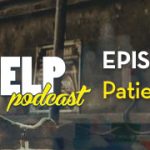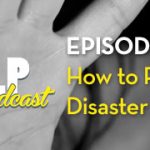What to do when your house burns down
I watched in horror at the footage of Notre Dame in flames and the terrible scenes of hundreds of people turning out onto the streets to witness it. It made me consider the immense power that fire has to destroy and also to cleanse. I remember the news footage of Windsor Castle with flames pouring from its roof and those terrible scenes of the planes flying into the Twin Towers. I read that when Dresden was bombed by the allies in the Second World War the air became so hot that things were spontaneously catching fire, including people and animals.
Yet fire has another side. When humans first began to understand and use fire it enabled them to keep warm and to eat foods that previously would have been indigestible. In my own house we love our log fire, it becomes the focal point of the house and the family in the cold winter months, and there is the Pizza Oven in the garden that becomes the focal point of family gatherings in the summer.
Even in farming, when the land was covered with forests humans developed the Slash and Burn method of agriculture, used when trees, vegetation and even whole forests were burned down to allow new seeds to be sown. This had two functions in that it cleared the land but also the ashes that were left behind created fertiliser to ensure the health and growth of the new crops.
Fire was also used to smelt iron and created the Iron Age and eventually the industrial revolution through the invention of steam engines and steam power. From coal mines and steel works to railways and steam engines, fire and steam have shaped our society, culture and our lives.
These days when we turn up the thermostat to make the house a bit warmer I wonder how many of us realise that we are benefitting from the controlled gas fire that is going inside our boiler. Or that when we drive our car that we are enjoying the controlled fire of petrol, diesel or gas that is powering our engines. The same it true on planes or ships they are all powered by fire. Even if we get to the point of driving and flying electric vehicles then the vehicle itself will need to be created by a system that includes fire.
The big down side of fire and our need and desire for it and the things that it produces is the CO2 emissions. As I write this the Extinction Rebellion protesters are trying to close down London demanding that CO2 emissions are reduced or illuminated. Like all protesters, if they put their energy into creating alternatives rather than complaining about what is actually happening then things might change a bit quicker.
As I think about this I begin to see that fire is neutral. It is neither good more bad, it just is. It is what we do with it that has the value of being positive our negative.
Notre Dame will be rebuilt, probably identical to the past. In many cases the destruction of fire allows us to get rid of the old and start afresh, to start anew. The emotional fire that destroys relationships or communities often creates a new beginning. When we run the Live In the present courses and write letters of forgiveness the suggestion is that we burn them, that we commit them to the flame and so doing creating an ending that allows for a new beginning.
Fire can the a catalyst. An energy for change. If we are positive the change will be constructive. If we are negative the change will be destructive. Either way the fire is neutral.
Take care, be happy and light a candle with love, thankful that no-one was hurt.
Sean x



Trackbacks & Pingbacks
[…] Sean has written a blog post to accompany this episode […]
Leave a Reply
Want to join the discussion?Feel free to contribute!